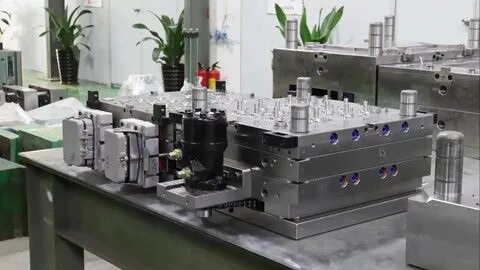Are you considering purchasing moulded parts from China? Because of its extensive production capacity, affordable prices, and technological know-how, China is a global hub for moulding. However, as a buyer, you can make a significant impact by knowing how the moulding process operates and what factors affect quality and delivery. In this blog, the fundamentals are broken down into five useful points. So read till the end to avoid typical blunders and make wise sourcing choices.

Be clear about the type of moulding process that is best for your product before you even get in touch with a supplier. For example, injection moulding works best for producing high-volume plastic parts with tight tolerances. The more specific your requirements are, the easier it will be to find a factory that has the necessary equipment and experience. Lack of clarity will result in delays and expensive redesigns.
Tooling is the cornerstone of the moulding China. The most costly and time-consuming component of the procedure is often the mould, also known as the "tool." Efficiency, accuracy, and consistency are guaranteed by a well-made tool. Enquire in-depth with your supplier about the tooling materials, the mold's lifespan, and the tool's post-production ownership. Misunderstandings over maintenance and tooling rights can lead to conflict, particularly when recurrent orders are involved.
Before beginning mass production, your supplier will usually send you a few samples after your mould is completed. Be careful at this stage. Review the samples for functioning, material quality, surface finish, and dimensional accuracy. This is your opportunity to identify any problems early. Ignoring feedback or rushing approvals can result in hundreds or thousands of useless units, and once they are on a container that is on its way to you, there is no easy fix.
Clear and frequent communication is essential when working with a Chinese supplier. Although many factories are competent, miscommunications regarding specifications, tolerances, or packing can nevertheless occur. If at all feasible, include illustrations, reference materials, or even videos. Moreover, don't depend on email alone. Ask for production updates at each significant milestone and schedule frequent calls. The procedure will go more smoothly if you are more involved.
The intricacy of the tooling, order volume, and manufacturing workload all affect lead times in China. Complex moulds can take up to two months to produce, while simple ones can be completed in three to four weeks. Allow extra time for quality assurance, packaging, shipping, and customs clearance once manufacturing begins. Always provide a buffer in your timeframes since strict deadlines might backfire if there are delays.
If you understand the process, purchasing moulded parts from China may be both economical and efficient. Every step counts, from sample clearance and clear communication to tooling quality. Being knowledgeable helps you stay ahead of the curve and build stronger relationships with your suppliers. Knowing how things operate on the ground may offer you an advantage, whether you're ramping up production or making your first purchase. Many of these suggestions also apply to fields like sheet metal production if you're expanding your scope.
How much time does molding typically take in China?
It varies depending on several factors, but tooling typically takes three to six weeks, including a week or two for sampling and corrections.
Should I pay for the mould up front?
Yes, before beginning a project, the majority of factories demand payment in full or in part for tooling.
Can I own the Chinese-made mould?
Usually, yes, but be sure to specify this in your contract. In writing, ownership should be clearly indicated.
What kinds of materials are utilized in China to make moulds?
Depending on your manufacturing volume and budget, hardened steel or aluminum is usually used for tooling.
When sourcing moulded parts, how can I ensure quality?
Always ask for thorough designs, provide your approval to samples before they are produced, and collaborate with suppliers that allow third-party inspections.